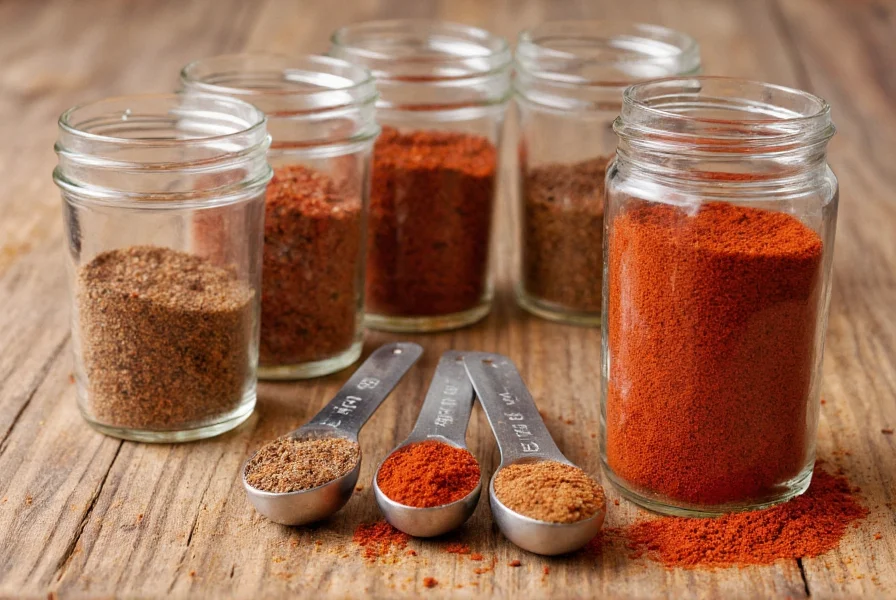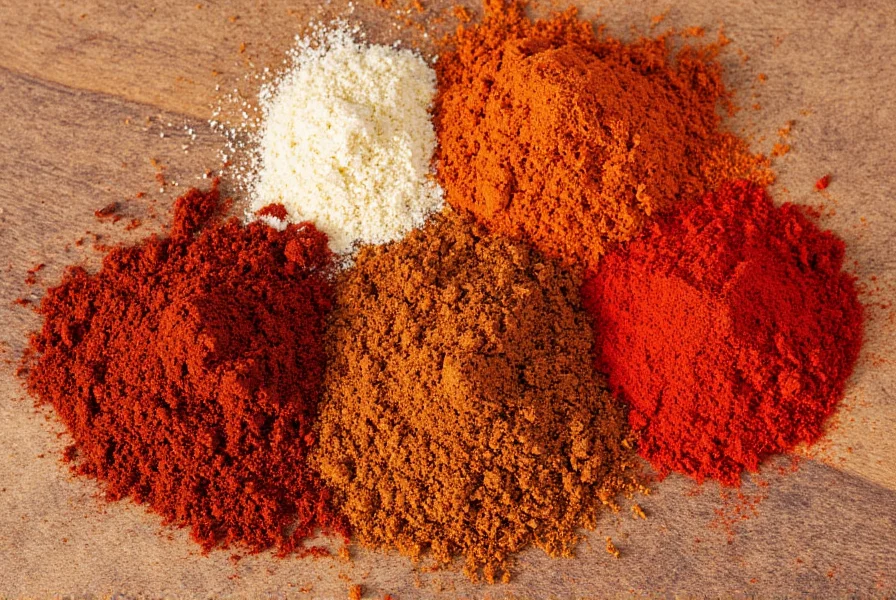Creating your own homemade chili spices gives you complete control over flavor, quality, and ingredients. Unlike commercial blends that often contain fillers, anti-caking agents, or excessive salt, a DIY approach lets you craft a pure, customizable seasoning that elevates your chili from ordinary to extraordinary. Whether you're making a classic Texas-style beef chili, a vegetarian bean chili, or experimenting with unique variations, understanding the core components of chili spices is essential for authentic results.
The Essential Components of Homemade Chili Spices
Each spice in a traditional chili blend serves a specific purpose in building layers of flavor. Understanding these roles helps you adjust proportions to match your personal taste preferences and regional styles.
Chili Powder: The Foundation
Despite its name, chili powder isn't just ground chilies—it's typically a blend itself. Quality chili powder provides earthy depth and moderate heat. For the best homemade chili spices, use a premium ancho chili powder for its sweet, raisin-like notes. When making how to make homemade chili seasoning from scratch, start with 2 tablespoons as your base measurement.
Cumin: The Signature Flavor
No authentic chili is complete without cumin. This warm, slightly citrusy spice creates that distinctive chili aroma. Use ground cumin for immediate flavor integration, though some chefs prefer to toast whole seeds and grind them fresh for homemade chili powder blend measurements. One tablespoon provides the ideal balance without overwhelming other flavors.
Garlic and Onion Powder: The Aromatic Base
These powdered alliums provide consistent flavor throughout your chili without the texture of fresh garlic or onion. They dissolve evenly in the liquid base, creating a uniform savory foundation. Use equal parts (1 teaspoon each) for balanced flavor in your customizable chili spice mix recipe.
Dried Oregano: The Secret Weapon
Often overlooked, Mexican oregano (different from Mediterranean varieties) adds a subtle floral note that complements the heat. Its slightly citrusy profile rounds out the blend. Use ½ teaspoon for noticeable but not dominant flavor.
Paprika: Depth and Color
Sweet paprika enhances color and adds mild sweetness, while smoked paprika introduces a campfire-like dimension. For traditional chili, use 1 teaspoon sweet paprika; for smoky homemade chili seasoning recipe variations, substitute half with smoked paprika.
Cayenne Pepper: Controlled Heat
This is where you customize your heat level. Start with ¼ teaspoon for mild chili, increasing to ½ teaspoon for medium heat. Remember, you can always add more heat during cooking, but you can't remove it once added.
| Spice | Basic Recipe (per lb meat) | Mild Variation | Hot Variation |
|---|---|---|---|
| Chili Powder | 2 Tbsp | 2 Tbsp | 2 Tbsp |
| Cumin | 1 Tbsp | 1 Tbsp | 1¼ Tbsp |
| Garlic Powder | 1 tsp | 1 tsp | 1¼ tsp |
| Onion Powder | 1 tsp | 1 tsp | 1¼ tsp |
| Dried Oregano | ½ tsp | ½ tsp | ½ tsp |
| Paprika | 1 tsp | 1½ tsp | ¾ tsp |
| Cayenne Pepper | ¼ tsp | – | ½ tsp |
Advanced Customizations for Your Homemade Chili Spices
Once you've mastered the basic blend, experiment with these professional techniques to create distinctive variations:
Regional Style Adaptations
- Texas Style: Omit paprika and oregano; increase cumin to 1½ tablespoons for a meat-forward profile focusing on chili powder and cumin
- New Mexico Style: Use 100% New Mexico chili powder (milder and fruitier) with a touch of ground coriander
- Cincinnati Style: Add 1–2 teaspoons of unsweetened cocoa powder and a pinch of cinnamon for that distinctive sweet-spicy profile
Texture and Freshness Enhancements
For restaurant-quality depth in your best spices for authentic chili recipe, consider these pro tips:
- Bloom spices: Heat 1 tablespoon oil in your pot, add the spice blend, and cook for 1–2 minutes until fragrant before adding liquids
- Add fresh aromatics: Incorporate 1 minced chipotle pepper in adobo sauce for smokiness
- Finish with acid: A splash of apple cider vinegar or lime juice just before serving brightens flavors

Storage and Usage Guidelines
Proper storage maintains the potency of your gluten-free homemade chili spices. Store in an airtight container away from light and heat. A dark cupboard works well for up to 6 months, though for maximum flavor, use within 3 months. Glass jars with tight-sealing lids preserve freshness better than plastic.
When using your blend in recipes, remember:
- For every pound of meat, use 3–4 tablespoons of spice blend
- Add spices early in the cooking process to allow flavors to meld
- Taste and adjust after 30 minutes of simmering—spice flavors intensify over time
- For bean or vegetarian chili, increase spices by 25% to compensate for less meaty depth
Troubleshooting Common Issues
Even experienced cooks encounter challenges with how much cumin in homemade chili spices and other balance issues:
Too Bitter
Over-toasted spices or excessive cumin often cause bitterness. Counter with 1 teaspoon of sugar or honey and a splash of acid (vinegar or citrus).
Too Mild
If your chili lacks depth, create a "spice paste" by mixing 1 tablespoon of your blend with 2 tablespoons of tomato paste and cooking for 2 minutes before adding to your pot.
Overpowering Heat
Balance excessive heat with dairy (sour cream or cheese), acidity (lime juice), or sweetness (a touch of honey). Never add more raw spices to an already-hot chili.
Frequently Asked Questions
Can I make homemade chili spices without cumin?
While cumin is traditional in most chili recipes, you can create a cumin-free version by increasing chili powder to 2¼ tablespoons and adding ¼ teaspoon of coriander for complexity. For Southwestern-style chili without cumin, try adding 1 teaspoon of ground coriander and a pinch of allspice to maintain depth.
How long do homemade chili spices last?
Properly stored in an airtight container away from light and heat, homemade chili spices maintain optimal flavor for 3–6 months. For best results, write the preparation date on the container. After 6 months, the spices remain safe but gradually lose potency and complexity.
What's the difference between chili powder and chili seasoning?
Chili powder is primarily ground dried chilies, while chili seasoning (or chili spice blend) contains chili powder plus other spices like cumin, garlic, and oregano. When making homemade versions, chili powder forms the base of your seasoning blend, typically comprising about 40% of the total mixture.
Can I use fresh spices instead of dried in my homemade blend?
Fresh spices don't work well in dry blends as they introduce moisture that can cause spoilage. However, you can enhance your chili by adding fresh elements during cooking—try 2 minced garlic cloves and 1 tablespoon fresh oregano in addition to your dry spice blend for layered flavor.
How do I adjust homemade chili spices for dietary restrictions?
Homemade chili spices are naturally gluten-free and vegan when made with pure spices. Always verify individual spice labels if cross-contamination is a concern. For low-sodium diets, avoid adding salt to your blend and control sodium through other recipe components.











 浙公网安备
33010002000092号
浙公网安备
33010002000092号 浙B2-20120091-4
浙B2-20120091-4